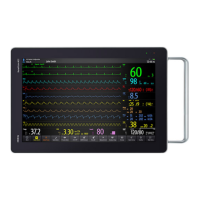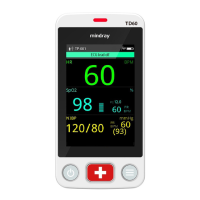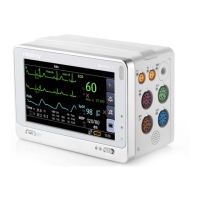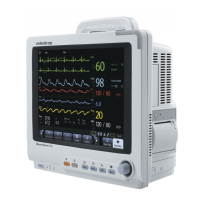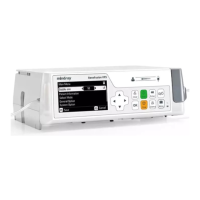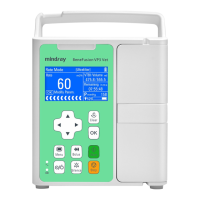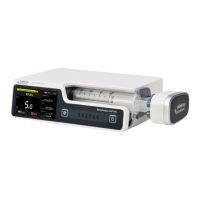BeneVision N1 Patient Monitor Operator’s Manual 11 - 1
11 Monitoring Temperature (Temp)
11.1 Temperature Introduction
The monitor can continuously monitor the patient’s skin temperature and core temperature. Thermally sensitive
resistors (thermistors) are used, and are based on the principle that electrical resistance of the thermistor
changes as temperature changes. The resistance change of the thermistors is used to calculate the temperature.
Up to two temperature sites can be monitored simultaneously and the difference between two measured sites is
calculated.
Temperature monitoring is intended for adult, pediatric and neonatal patients..
11.2 Temperature Safety Information
• Verify that the probe detection program works correctly before monitoring. Remove the
temperature probe cable from the temperature probe connector, and check that the monitor can
display the alarm messages and give alarm tones correctly.
11.3 Temperature Display
The following figure shows the Temp numeric area for temperature monitoring with the monitor. Your display
may be configured to look different.
11.4 Preparing for Temperature Monitoring
To prepare temperature monitoring, follow this procedure:
1. Select an appropriate probe for your patient according to patient category and measured site.
2. Plug the probe or temperature cable to the temperature connector. If using a disposable probe, connect
the probe to the temperature cable.
3. Follow the probe manufacturer’s instructions to connect the probe to the patient.
(1) Temperature site (2) Temperature alarm limits (3) Temperature value
(4) Temperature difference (
ΔT): Difference between two temperature sites. It displays only when ΔT is switched on.
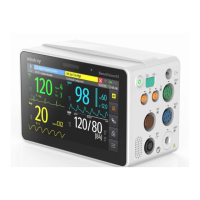
